#Radiolarian
Photo
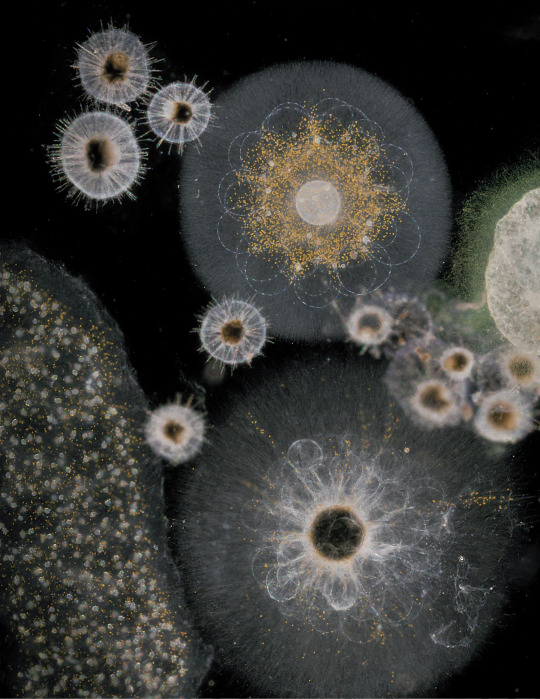
Wonders of the drifting world...
Radiolarians (Polycystinea) are microplanktonic Protozoa characterized by a delicate skeleton of opaline silica, visible here as tiny ocre-colored dots. On the top left is a colonial radiolarian – Christian Sardet, 'Plankton – Wonders of the Drifting World', Univ. Chicago Press 2015
“Take a Breath and Thank Plankton. One out of every five breaths taken by any (and every) life form on the planet comes from a diatom. Diatoms are a kind of phytoplankton: that is, microscopic plants drifting in all bodies of water. They carry out photosynthetic processes, ultimately producing oxygen in the air we breathe.
Like diatoms, single-celled algae that also form silica skeletons, radiolarians sink after death, trapping atmospheric carbon in the sediment of the deep oceans. The composition and distribution of their fossils are used to estimate past water temperature and salinity in the oceans.”
Unraveling the Mysteries of Radiolarians | AMNH…
2K notes
·
View notes
Photo

Late Sandbian (Sa2) radiolarians of the Pingliang Formation from the Guanzhuang section, Gansu Province, ChinaSiyumini Perera, Jonathan C. Aitchison (https://bioone.org/journals/journal-of-paleontology/volume-96/issue-1/jpa.2021.86/Late-Sandbian-Sa2-radiolarians-of-the-Pingliang-Formation-from-the/10.1017/jpa.2021.86.full)
126 notes
·
View notes
Text
Jakol para kay mommy na ka Fubu
Finally got sum Fat Wet Latina Panocha after 3 months in jail!
Blonde masturbating with toy in the ass
new bengali kolkata bhabi
Fascinating babes in sexy lingerie enjoy body teasing and pissing
Handcuffed Anal Slave Wife
Hairy Mom mastrubating with banana
Busty black babe bouncing on cock
Blonde squirts several times on machine
Gostosa rebolando loucamente no pau
#giddy-go-round#apologiser#unpromotive#iridectomize#filamentous#bokmakierie#life-quelling#ototoxic#suburbican#risker#outgabbling#presubdued#star-bearing#vaporeon#Biak#circumquaque#pruta#radiolarian#Oxyopidae#overrash
0 notes
Text
Taking pictures through a microscope on a rocking moving ship is hard but wanted to share a bunch of lil guys I recently found in zooplankton samples ( •◡•)

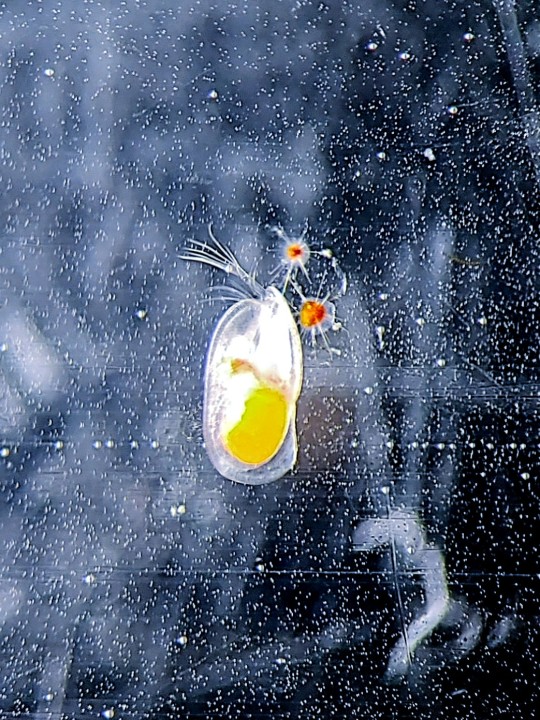

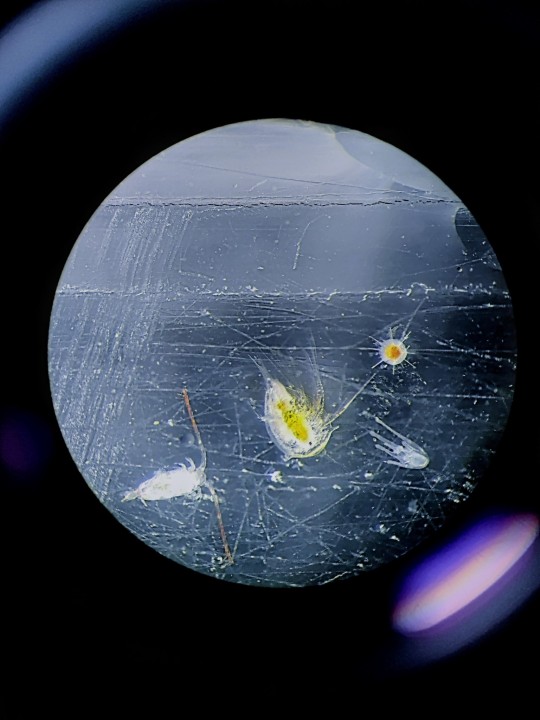


In order:
- Siphonophore with 2 copepods (Calanus sp.) stuck inside
- an ostracod & 2 radiolarians
- Calanus hyoperboreus (copepod)
- Bottom left: Calanus finmarchicus (copepod, young stage, probably CII), middle: cirriped larva (barnacle), top right: radiolarian, bottom right: pluteus larva (brittle star)
- Amphipod that I didn't have time to ID
- Termora longicornis (copepod)
#yes the radiolarians are autotrophic impostors#if you can guess what country / ocean the sample is from you get a cookie#marine biology#zooplankton#ocean#marine bio
67 notes
·
View notes
Link
"This is where the dexterity comes in."
1 note
·
View note
Text


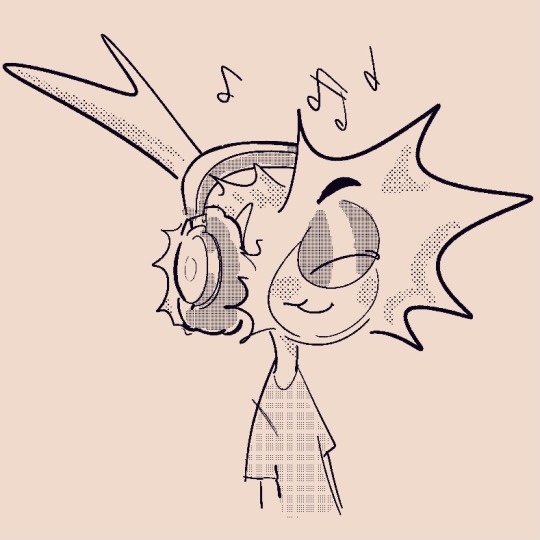
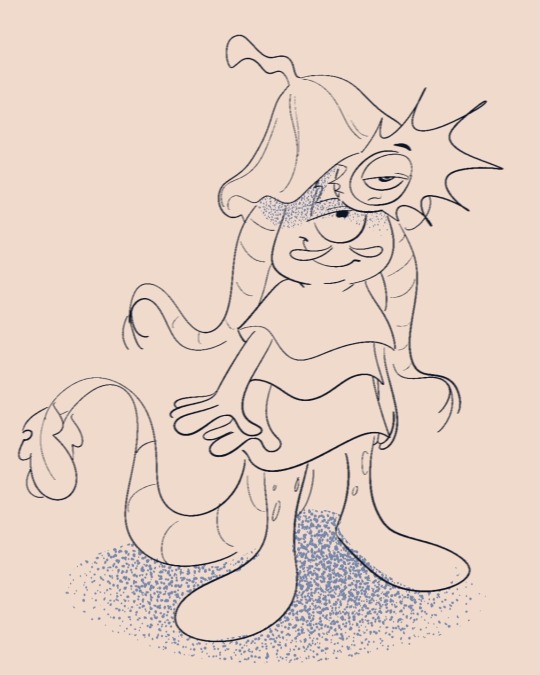
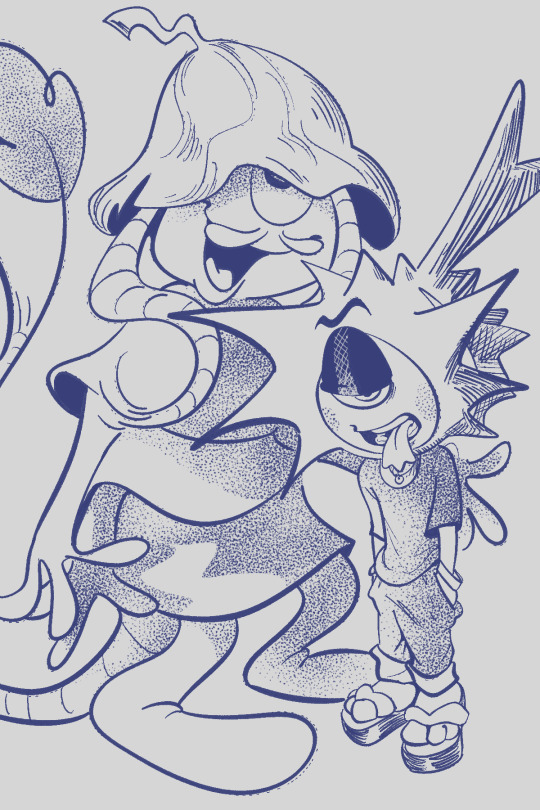
Just my ocs Dellosis, Pepper, Compote, and the lil guy being @stilettomafiosas ‘s oc Mixtape the radiolarian.
Nochtli being twisty like that is just something they do and ended up being another one of Dellosis’ leech motif even before he has interest in them. He was raised by octos and learned later in life he was a cuttlefish
#ocs#splatoon original character#splatoon ocs#dellosis#compote#pepper trick#my art#art#doodles#digital art
83 notes
·
View notes
Photo

Precious opal (Andamooka Opal Fields, South Australia)
Opal is hydrous silica (SiO2·nH2O). Technically, opal is not a mineral because it lacks a crystalline structure. Opal is supposed to be called a mineraloid. Opal is made up of extremely tiny spheres (colloids - www.uwgb.edu/dutchs/acstalks/acscolor/OPALSPHR.jpg) that can be seen with a scanning electron microscope (SEM).
Gem-quality opal, or precious opal, has a wonderful rainbow play of colors (opalescence). This play of color is the result of light being diffracted by planes of voids between large areas of regularly packed, same-sized opal colloids. Different opalescent colors are produced by colloids of differing sizes. If individual colloids are larger than 140 x 10-6 mm in size, purple & blue & green colors are produced. Once colloids get as large as about 240 x 10-6 mm, red color is seen (Carr et al., 1979).
Not all opals have the famous play of colors, however. Common opal has a wax-like luster & is often milky whitish with no visible color play at all. Opal is moderately hard (H = 5 to 6), has a white streak, and has conchoidal fracture.
Several groups of organisms make skeletons of opaline silica, for example hexactinellid sponges, diatoms, radiolarians, silicoflagellates, and ebridians. Some organisms incorporate opal into their tissues, for example horsetails/scouring rushes and sawgrass. Sometimes, fossils are preserved in opal or precious opal.
Locality: unrecorded locality in the Andamooka Opal Fields, ~eastern edge of the Stuart Range Plateau, west of northern Lake Torrens, southeast-central South Australia (environs of 30° 26' 50" South latitude, 137° 09' 55" East longitude)
255 notes
·
View notes
Text

Plankton, a composite image by Roman Vishniac published in LIFE magazine in November 30, 1953.
Caption (note that this was split equally across two pages, and if anyone has a better ID for the critters let me know):
Plankton, the basic food store of the sea, encompasses an immense variety of small floating plants and animals. The more important specimens are shown here without regard to true scale. Most are microscopic, although the largest, the bell-like medusa at bottom of left-hand page, is two inches long. They include: a diatom (straight yellow rod near center of right-hand page); radiolarians and foraminifera (small circular shells to left of diatom); a dinoflagellate (pick-shaped object in lower center of left-hand page); a copepod (above the dinoflagellate); a shrimplike mysid (to right of copepod); a “flying” snail (top, center of left-hand page); sea worms, one with two egg sacs (near upper left-hand corner) and one with tentacles (upper right-hand corner); sea “spiders” (left-hand page, center right and upper right corner); young fishes (right-hand page, left center and top center); larvae of sea urchin (V-shaped object below fish) and of spiny lobster (next to tentacle worm at upper right).
#marine biology#plankton#sea creatures#animals#life magazine#the world we live in#photography#roman vishniac
68 notes
·
View notes
Photo

Latest Permian Spumellaria and Entactinaria (Radiolaria) from South ChinaSpumellaires et Entactinaires (Radiolaires) du Permien terminal de Chine du Sud
Qinglai Feng, Weihong He, Songzhu Gu, Yuxi Jin, Youyan Meng
26 notes
·
View notes
Text
i found out about radiolarians today and i think theyre a new favorite creature
13 notes
·
View notes
Text
Mineral Swag Round 1: Blue Minerals B

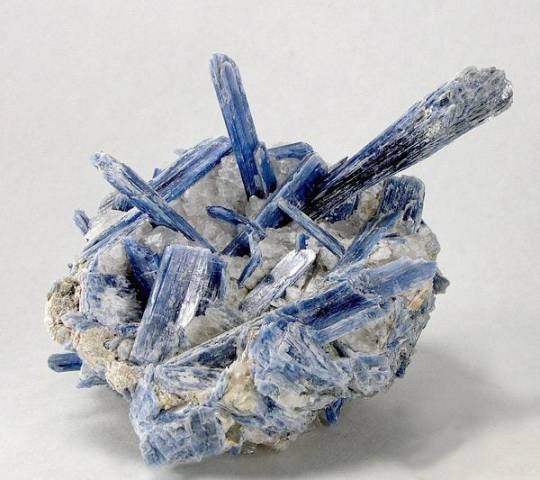
More under the cut!
Celestine is an often light blue translucent mineral that contains strontium. Apparently, Acantharea radiolarians have skeletons made of celestine instead of silica. Radiolarians are small protozoa with cool looking skeletons, for those interested! Celestine can also be white or yellowish.
Kyanite is another blue mineral that contains aluminum. It often forms columnar or bladed crystals and is typically found in metamorphic rocks.

Here are some radiolarians, btw:

66 notes
·
View notes
Text
AO3 analysis [May 2022, English]
Back in May I scraped a bunch of Detective Conan metadata off of AO3 and did some data analysis!
I used English-language works only. There were a total of 5,945 works included.
Important caveat: This analysis does not include fics that are locked to logged-in AO3 users only. For example, Curiosity Made the Cat is very popular, but wasn't included in these numbers.
Another caveat: This doesn't include the 50 or so fics that were Magic-Kaito-only, at the time of scraping.
The following graphics all have image descriptions. Please hover or tap to see them.
Works over time
First, total number of DetCo works on AO3, over time!

Big acceleration around 2016. I'll let more informed minds speculate as to why.
Characters
Next, let's look at some per-character statistics. Here are the number of AO3 works the top 10 characters appear in.
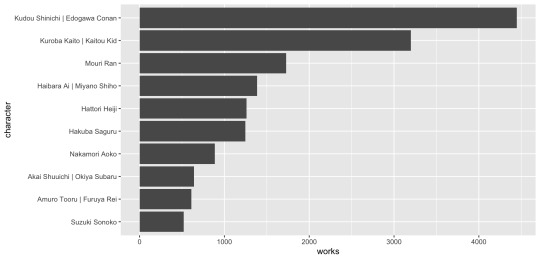
As is probably appropriate for the main character, Shinichi/Conan is in 75% of fics. Kaito, who isn't even part of the regular cast, comes in at #2 with in 3,000 works.
And here are the number of ships they appear in.

Shinichi has probably been shipped with the entire cast at this point, including himself.
Creators
Some authors write a lot. The most prolific by number of Detective Conan works posted to AO3 are:

And by total number of words posted across all Detective Conan works on AO3:
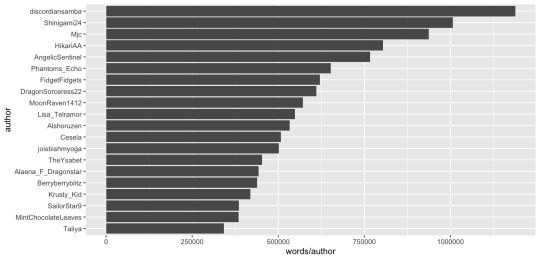
Some authors write for a large variety of relationships, too.

Kudos per hit
Want to know what brings in kudos (and probably Kudous)?
Note: The following graphs are density estimates using R's ggplot's default parameters.
Caveat: Works with very high kudos/hits ratios, but low hits and all guest kudos were excluded, as their statistics are probably the result of bot activity.
The following graphs are all kernel density estimates, essentially smoothed versions of a histogram, scaled so the area under the curve equals 1. If you don't know what that means, right equals more kudos per hit, and left equals fewer.
First, how rating affects the kudos-to-hits ratio.

The more family-friendly a work is, the more kudos per hit it's likely to see.
Here are kudos over hits, broken down by the top four Detective Conan ships on AO3.
Caveat: Only single-ship works were included.

And here it a similar visualization, broken down by M/M, F/F, or F/M.
Caveat: Only single-category works were included.
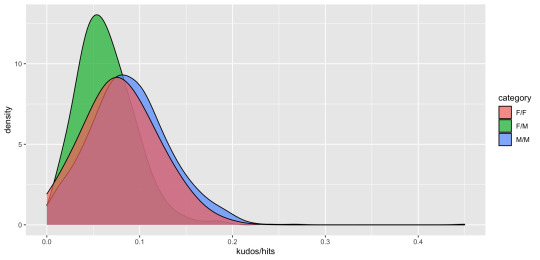
Additional tags
And for fun, a word cloud of the 100 most common tags in the "additional tags" field.

FLUFF!
Keep in mind that the largest tag, "Fluff," only represents 793 fics out of 6,000. For other reference points, "Angst," represents 487 fics and "Aged-up Characters" represents 62.
(If you saw a different version of this graphic on Discord, with Angst as the largest tag, I fixed a bug. Fluff is biggest :D)
Other notes
FFN version is here <3.
I used a lightly modified version of Radiolarian's AO3 Scraper to pull data off of AO3, Python to canonicalize tags and do some CSV reformatting, and R to generate the graphs.
Please ask me if you want to see the data or code.
An earlier version of this post mistakenly stated that Shinichi is in 5,000 fics. He was in just under 4,500, in May.
An earlier version of this post mistakenly stated that the rate of new fics was 50 fics per day in 2016. It was 50 fics per month.
An earlier version used “Curiosity Killed the Cat” as an example of a locked fic; the actual name of the fic is “Curiosity Made the Cat.”
#circ talks#circ computes#detective conan#dcmk#data analysis#reposting because tumblr didn't let the previous one into the tags#T_T
200 notes
·
View notes
Photo
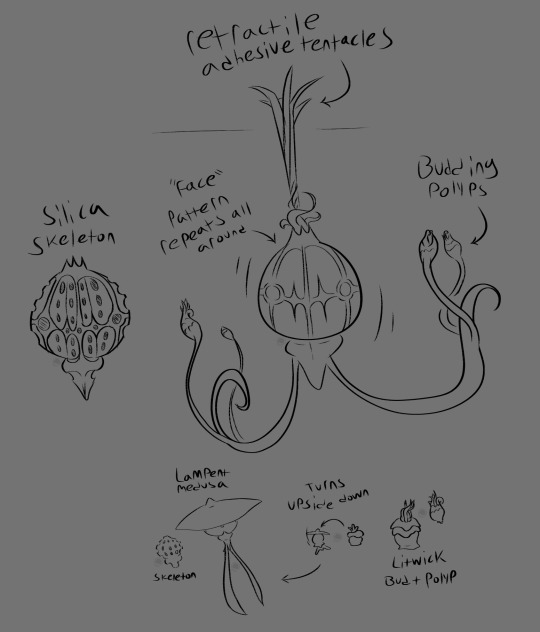
my realistic take on the chandelure line!
bio under the read more
the chandelure line are more akin to a Jellyfish relative with radiolarian features, namely a lattice-like silica internal skeleton.
Chandelure begin their lives normally by budding off from their parent, dropping to the ground and growing into a polyp known as a litwick. they use their bioluminescent tentacles to attract and consume small prey, subduing them with a HIGHLY Neurotoxic venom which causes an immediate and intense burning sensation, as if touching a flame, before killing the nerves entirely and causing the area to go numb, radiating upwards as the venom spreads. a sensation which the line is infamous for.
once a litwick begins to mature, their bodies start composing a small internal skeleton out of a lattice of silica, once its large enough the litwick begins to retain gas in the central chamber, showing the skeleton’s true purpose: to protect a Gas Chamber that will retain lighter than air gasses and allow the lampent to float near-effortlessly through the air, the remains of the disc that they used as litwick to adhere themselves in place, or move slowly now fans out into a sort of bell that they use to propel themselves weakly through the air, dangling their arms to hopefully catch prey attracted to their bioluminescent body.
when at last they reach full maturity the lampent have budded new tentacle filaments on both the top of it’s head and at various parts of it’s arms. they become uncomfortable with free floating as their bell begins to diminish, and look for a steady territory. once they find an ideal spot, they use the new tentacle buds at the top of their head to adhere themselves in place, though they are still capable of floating and moving should the need arise. their bell disappears entirely and the tentacle buds forming on their primary feeding arms begin to form asexual Buds to form new litwick polyps.
69 notes
·
View notes
Note
Bunch of answers:
-The thing in the picture is a 𝘚𝘺𝘳𝘪𝘯𝘨𝘢𝘮𝘮𝘪𝘯𝘢 𝘧𝘳𝘢𝘨𝘪𝘭𝘪𝘴𝘴𝘪𝘮𝘢, a kind of Xenophyophorean, which are specialized foraminiferans known for making funky tests (shells) out of sediments. It has no relationship to plants and can't photsynthesize, not sure where you gor that from :)
-SARS viruses have no relationship to the SAR clade. SARS stands for Severe Acute Respiratory Syndrome whereas (T)SAR is just the initials of its majour groups. The name similarity is a complete coincidence.
-S: Stramenopiles is a diverse group of organisms also called Heterokonts (greek for different flagella), as most have at one point of their life cycle 2 flagella, one with and one without "little hairs" on top of the flagellum and the length is also different. Some notable representatives:
• Oomycetes, also known as pseudofungi, which are organisms that look quite a bit like fungi (they form hyphae and micelia) but have no relationship at all. Some are saprophytes whereas others are parasites of plants and fish, including potato blight, the organism that caused the Irish Potato Famine
• Diatoms: Unicellular algae which form very beautifully patterned shells out of silica (so glass), and are very abundant.
• Brown algae: Brown algae have no relationship to plants or other algae. Unlike plants and red and green algae, which acquired their chloroplast from a primary endosymbiosis event with a cyanobacteria, brown algae and many other unicellular algae acquired their chloroplasts by undergoing endosymbiosis with 𝘢𝘯𝘰𝘵𝘩𝘦𝘳 already existing alga. (look into endosymbiosis theory if u have no idea whats going on here)
-A: Alveolata are organisms which have a kind of sacs made of membrane under their main membrane called alveoli. They are also incredibly diverse. They include
• Dinoflagellates: A kind of algae which (in some cases) modified their alveoli to fill them up with cellulose and form a kind of shell. They have funky shapes and are often abundant in the sea. Some of them are known for causing massive blooms which turn the sea red (red tides) and can cause food poisoning if you eat seafood from where a bloom happened.
• Ciliates: Organisms known for having lots of cilia on their bodies, won't go into them because they're very diverse and different, but you can think of a 𝘗𝘢𝘳𝘢𝘮𝘦𝘤𝘪𝘶𝘮 for a typical example of a ciliate.
• Apicomplexans: Mostly parasitic organisms which have a sort of "complex" on the tip of the cell which helps them inject themselves into other cells, this includes the organism which causes malaria, 𝘗𝘭𝘢𝘴𝘮𝘰𝘥𝘪𝘶𝘮.
-R: Rhizaria are amoeboid organisms which often have long pseudopodia called filopodia and are, who would've guessed, also very diverse. The most well known of them are
•Formanifera: A group of mostly marine organisms which form single or multi-chambered shells which can get very complex and are abundant in the sea, so much so that if you know which foraminifera lived in which time periods, you can use their shells in marine sediments to assign a date to them.
• Radiolarians: Organisms which are known for making very intricate and beautiful shells which are very diverse in shape. Look up some of Ernst Haeckel's illustrations of Radiolarians.
-T: Regarding the Telonemia, very few species are described and they aren't very well known, but genetic analysis placed them close to the SAR clade so the acronym is sometimes extended to TSAR
Hope all this helps
THANK YOU SO MUCH MY DUDE THIS IS AN AMAZING ANSWER AHAHAHAHA

^this is why I thought they were related to plants, because both SAR and plants / plant-related things are in this clade, and it says most of the organisms which can photosynthesise are in this clade. But I misunderstood it, thinking it meant most of the organisms that are in this clade can photosynthesise. So, SAR can’t photosynthesise. Is this article wrong to say SAR and plants are related?
Ok so I found this article, which has this tree of life in it-

Which suggests plants and TSAR are very loosely related in that they’re closer than eg opisthokonts. And this was in 2020 so is probably fairly close to how things are modernly. (I haven’t fact checked this article. I hope it’s mostly true…)
ANYWAYS
If the xenophyophore makes itself a shell, is that what you can see in the photo? Is the organism itself smaller than the shell or does it fill it? The shell is made of sediment, is it the texture of sediment? All squishy? Or is it shell-ish?
What does saprophyte mean? (Nvm I googled it, it means something which munches upon dead things to survive)
OH DIATOMS SOUND SO COOL!! Kinda like glass sponges but tiny algae!!
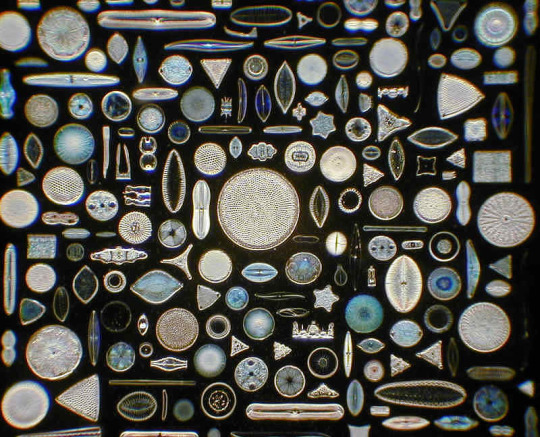
oh wowwww they’re stunning! gorgeous! i love them! beautiful! new favourite organism!
i am thrilled by the fact that plants get their chloroplasts from cyanobacteria. I did not know that. Everything relies on cyanobacteria?!?! Where do cyanobacteria get their chloroplasts from btw?
do the alveoli contain the rest of the cell or are they just empty? what’s in the alveoli? Does that just depend on what specific alveolate it is or do most alveoli have a similar function?
14 notes
·
View notes
Note
if you don’t mind me asking what’s some facts about ry-4? :3 and there’s a question going around i saw before based on this season that’s like “what would your guardian be the god of as a hive god” (because i’m unimaginative I have Eiva down as the hive god of destiny(fate)/doom lmaoo idk it just feels so Fitting)
Aaaaah I don't mind at all thank you for asking!!!
The first thing to know about them is that Ry is short for Rhapsody, which was the codename of an exo project.
Project Rhapsody's goal was to study various frequencies that surrounded the Traveler and attune exo bodies to these frequencies in order to make the chances of these exos getting picked by a ghost significantly higher. The project was ultimately shelved because of the ever changing frequencies and unending appearances of new ones, resulting in way too many casualties that would never be revived by a ghost.
As far as Ry knows, they are the only case where the frequency worked as intended, but since they became a guardian after the bray facility was destroyed and abandoned, no one never knew that except themselves and Dish.
Since they've been picked up by their Ghost, Ry had to reboot 3 times (current Ry being Ry-4). The first time was because of a memory core malfunction, the second time was because of radiolarian fluid (Ry hates telling that embarrassing story) and the third because of Arc corruption, shortly after the beginning of the Destiny 1 storyline. Thanks to Dish, they stayed themselves through all reboots.
I still have to work a little bit on their timeline and when/where exactly does everything happen, but I know it's long before the events of the first game.
As for the hive god thing hmmmmmmmmm I'd say either the hive god of bad luck or resilience!
14 notes
·
View notes
Text
i get so excited because like oh when you see it when you look to the micro you see the macro a thousand fold i love it so much it makes me weep and weep and weep. Orbulina universa i just met you this week but i love you, you do not have this as a concept but i do and i love you for your calcium carbonate shell and your symbiotic relationship with the dinoflagellates.
the birth and death of stars in you, orbulina universa. your life is so short and so immense and you're so important.
radiolarians I just met you today and I love you so much thank you for piling a hundred meters thick on the sea floor with your intricate silicate shells that held your pseudopods. immense in your smallness. i love you so much you're so beautiful thank you for what you contribute both to the planet and us understanding it
[HOWLING AT THE MOON] I LOVE YOU PROTISTS I LOVE YOU CYANOBACTERIA I LOVE YOU ALGAE
5 notes
·
View notes